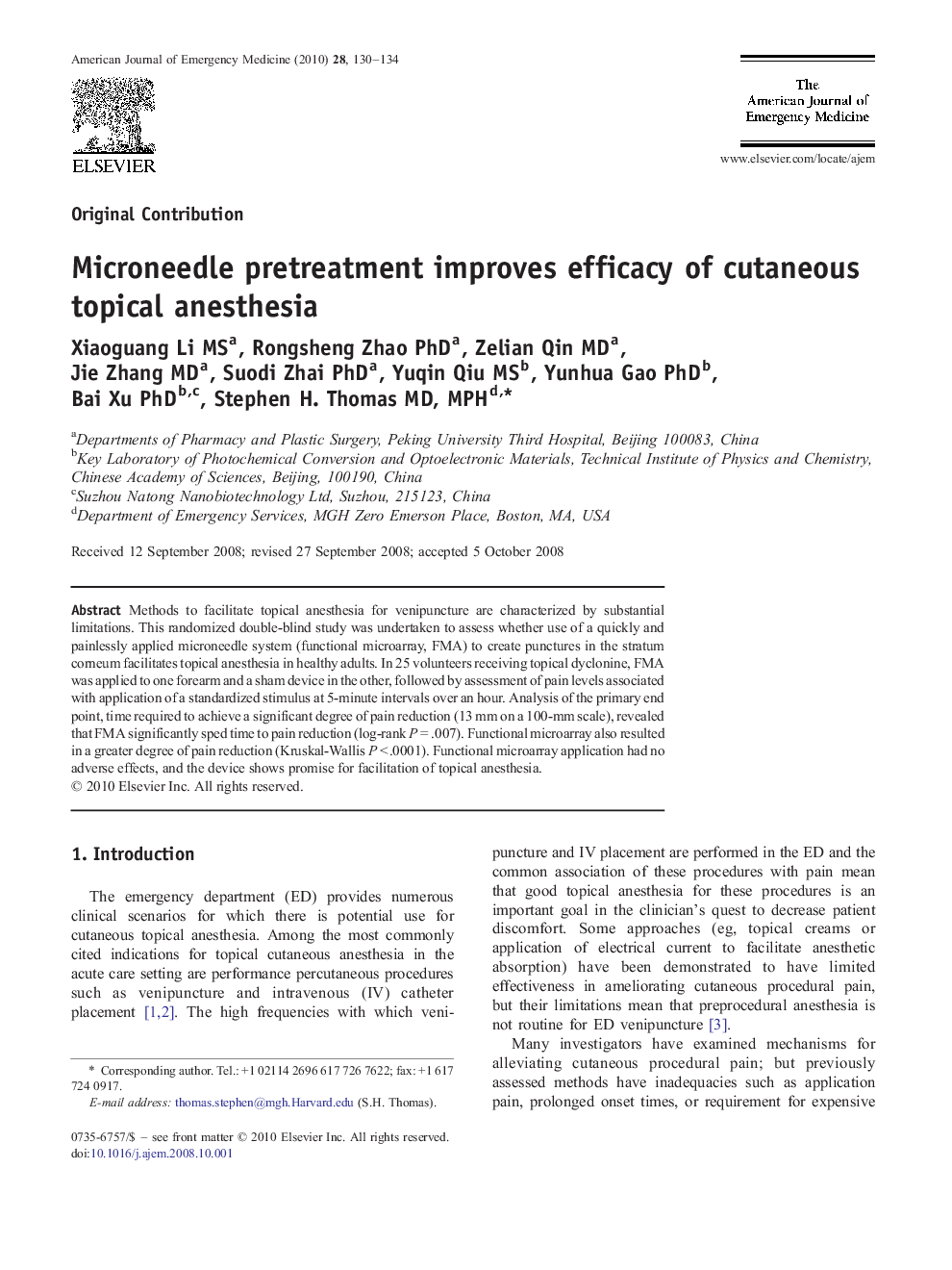| Article ID | Journal | Published Year | Pages | File Type |
|---|---|---|---|---|
| 3226912 | The American Journal of Emergency Medicine | 2010 | 5 Pages |
Methods to facilitate topical anesthesia for venipuncture are characterized by substantial limitations. This randomized double-blind study was undertaken to assess whether use of a quickly and painlessly applied microneedle system (functional microarray, FMA) to create punctures in the stratum corneum facilitates topical anesthesia in healthy adults. In 25 volunteers receiving topical dyclonine, FMA was applied to one forearm and a sham device in the other, followed by assessment of pain levels associated with application of a standardized stimulus at 5-minute intervals over an hour. Analysis of the primary end point, time required to achieve a significant degree of pain reduction (13 mm on a 100-mm scale), revealed that FMA significantly sped time to pain reduction (log-rank P = .007). Functional microarray also resulted in a greater degree of pain reduction (Kruskal-Wallis P < .0001). Functional microarray application had no adverse effects, and the device shows promise for facilitation of topical anesthesia.
